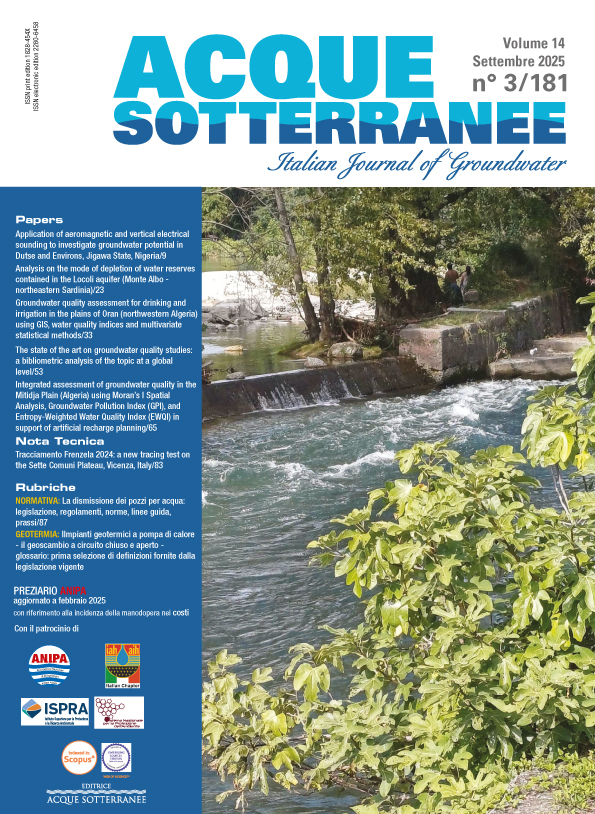Application of aeromagnetic and vertical electrical sounding to investigate groundwater potential in Dutse and Environs, Jigawa State, Nigeria

All claims expressed in this article are solely those of the authors and do not necessarily represent those of their affiliated organizations, or those of the publisher, the editors and the reviewers. Any product that may be evaluated in this article or claim that may be made by its manufacturer is not guaranteed or endorsed by the publisher.
Authors
This study examines subsurface structures and their potential for groundwater exploration using integrated geophysical datasets, including Magnetic and Vertical Electrical Sounding (VES). In processing the magnetic data, various filters such as Upward Continuation (UC), First Vertical Derivative (FVD), analytic signal, and Source Parameter Imaging (SPI) were applied to enhance the structural attributes and estimate the depths of magnetic structures (basement). The residual and UC maps reveal a strong magnetic high in the northern and southern regions, potentially linked to lithological variations or an undulated basement. Specifically, we delineated a prominent NE-SW trending lineament interpreted as a geologic contact zone, which has never been identified in the area, serving as a pathway for groundwater flow. The depth to the basement is estimated to range from approximately 100 to 500 meters, with the deepest regions indicated around the Army barracks, the northeastern side, and Duste Town. The VES results indicate a deep aquifer in the Barracks and Northeastern axes, with a corresponding deep crystalline basement at depths that align with the SPI depth estimates. We identified a thick claystone and compact sandstone at the barracks and along the contact zone, which may be responsible for the low-yield boreholes. Overall, the deepest aquifer zone in the region lies between 70 and 100 meters. The study highlights key areas for promising groundwater exploration, with apparent resistivity (ρα) contrasts indicating potential aquifer accumulation. This information is essential for efficient groundwater exploration and future drilling attempts.
How to Cite

This work is licensed under a Creative Commons Attribution-NonCommercial 4.0 International License.








